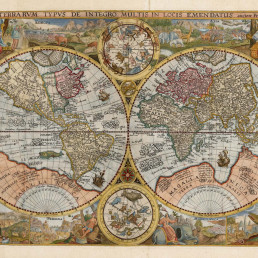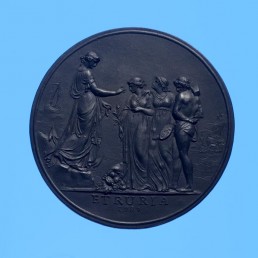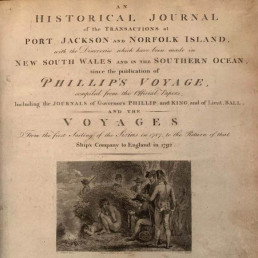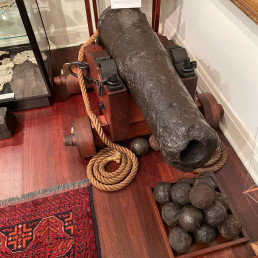
Name/TitleThe Residence of Phillip Parker King
About this objectPhillip Parker King, son of the third Governor of New South Wales, was born on Norfolk Island in 1791. In 1807 he entered the Royal Navy. In 1817 after his marriage to Harriet Lethbridge, he left England for Australia with instructions “to explore, with as little delay as possible, that part of the coast of New Holland…not surveyed or examined by the late Capt. Flinders”.
In the lower-left margin of his watercolour King has noted that the image is of his residence during his Australian coastal surveys of 1818 to 1822. His detailed and important coastal explorations, four surveys in all, were described by him in his ‘Narrative of a Survey of the Inter tropical and Western Coasts of Australia’, which was illustrated with his own drawings. King went on to consolidate a formidable career as explorer and hydrographer. He sailed with Charles Darwin in 1826 on the BEAGLE voyage to chart the coasts of Peru, Chile and Patagonia; Darwin described him as “my beau ideal of Captain”.
King’s wife Harriet, obviously spent much of her time at their Church Street residence without her young husband, but three of their eight children were born there: Philip Gidley in 1817, John in 1820 and William Essington in 1821. King records their births on the drawing itself. Parramatta was rapidly becoming an organised community by the 1820s. In 1822 Surveyor James McBrien’s map showed fewer than 300 dwellings, mainly on the south side of the river, with less than sixty houses across the river. It was the centre of agriculture in the colony and in some respects as important as Sydney.
With Macquarie’s presence at Government House and his continuing building programme, the town was notably handsome. The King residence stood at the junction of Phillip and Church Streets both of which were part of Macquarie’s original street plan. King’s symmetrical residence captures the very essence of Australian Georgian architecture. Very few domestic examples of this period survive today.
MakerPhillip Parker King - Artist
Maker RoleArtist
Date Made1820
Period19th century
Medium and MaterialsPaper and watercolour
Place MadeAustralia
Inscription and Marks‘The Residence of Phillip Parker King during his surveys in Australia from 1818 to 1822’, signed “P.P. King”.
Measurements220mm x 150mm
Object TypeLandscape Paintings
Object numberSF000712
Copyright Licence![]() Attribution - Non-commercial - No Derivatives (cc)
Attribution - Non-commercial - No Derivatives (cc)
Explore by category
Maps and Charts
Date range: 1541-1836
Ship Models
Date range: 1629-1890
Maritime Paintings
Date range: 1793-1849
Manuscripts and Ephemera
Date range: 1768-c1850
Medallions & Convict Tokens
Date range: 1619-1880
Landscapes
Date range: 1768-c1850
Books
Date range: 1694-c1850
Currency and Shares
Date range: 1624-1823
Printed Material
Date range: 1541-1836
Maritime Archaeology
Date range: 1629-1854
Curator's corner
New acquisitions, staff favourites and curios
The mug is decorated with an underglaze and a blue transfer print. On the body, it is titled ‘Emigrants to Australia’. This type of body and glaze was discontinued by 1840. Comparison of the handle shape and the profile of the foot, point to the attribution of manufacture by the Davenport Factory.
Delta was a ship-rigged vessel with two decks and three masts. It was built in Dordrecht, Netherlands in 1839 at the shipyard of Jan Schouten and registered in the same port. Its hull was constructed of oak and sheathed in ‘yellow metal’. Delta was owned by H. van der Sande at the time of its loss and was engaged as a cargo trader.
The Delta carried 29 crew and passengers, while sailing from Melbourne to Batavia in ballast when wrecked at Kenn Reefs on 30 May 1854 whilst under the command of Captain J.G. Kunst. This vessel loss supports the pattern of shipwrecks located on a well-travelled shipping route that was poorly charted until the mid-nineteenth century. The crew of the Delta could see four other shipwrecks at Kenn Reefs at the time of their vessel’s loss.
Important image of a ship associated with Matthew Flinders, that would shortly become one of the most famous early shipwrecks in eastern Australian waters. This is a fine ship’s portrait, by one of the great exponents of the art


















